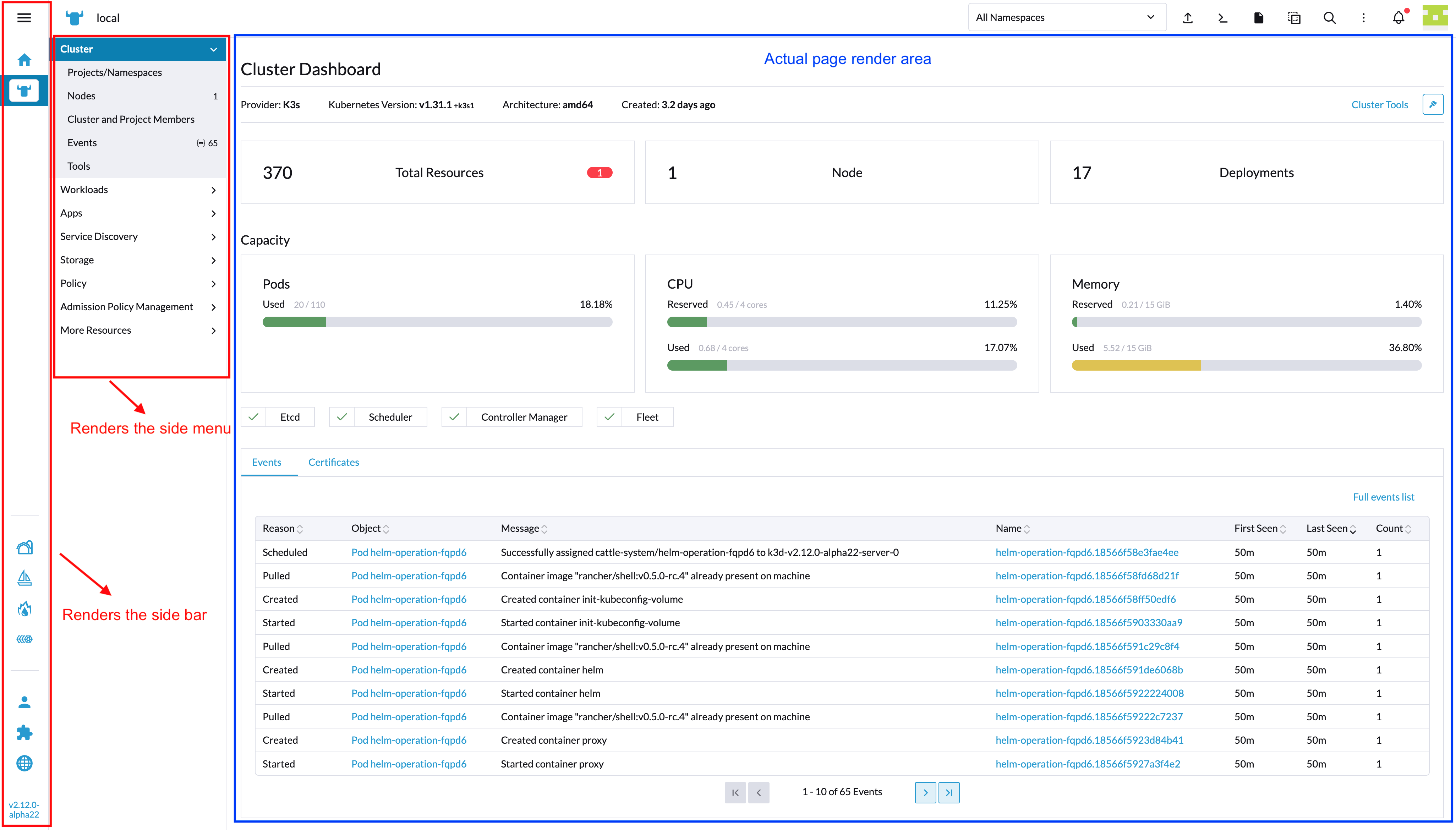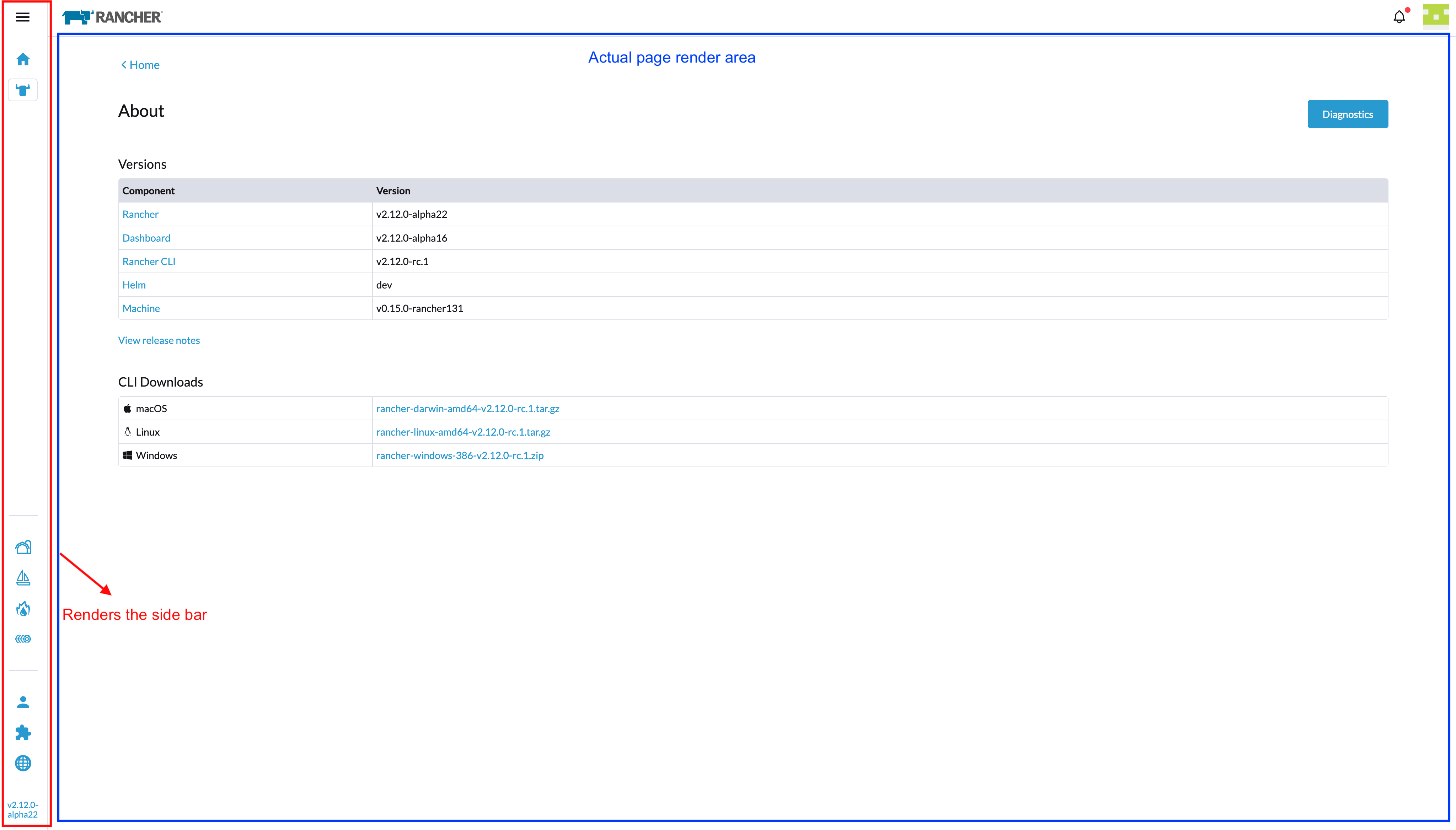Page templates
When you create a page, either a Custom Page (virtualType) or a Resource Page (configureType), you can make use of different templates. By default it will use the default layout, but there are two different templates available:
default template

The default template always renders the main side bar and the side menu, leaving a smaller area marked in blue (check screenshot above) for the actual page render.
plain template

The plain template always renders the main side bar but without any side menu, leaving a slightly bigger area, when compared with the "default" template, marked in blue (check screenshot above) for the actual page render.
How to use a template
How does a developer make use of a template?
Let's make use of the example of a Top-level product. When defining the routes to be added to the Vue Router, instead of having each entry of the array of routes as a "simple" route object like the example on the previous link, you'll need to slighty tweak the object format to add the parent property, which must match the template names, and also add a route property, such as:
const BLANK_CLUSTER = '_';
import MyCustomPage from '../pages/myCustomPage.vue';
const YOUR_PRODUCT_NAME = 'myProductName';
const CUSTOM_PAGE_NAME = 'page1';
const routes = [
// this is an example of a custom page if you wanted to register one
{
parent: 'plain',
route: {
name: `${ YOUR_PRODUCT_NAME }-c-cluster-${ CUSTOM_PAGE_NAME }`,
path: `/${ YOUR_PRODUCT_NAME }/c/:cluster/${ CUSTOM_PAGE_NAME }`,
component: MyCustomPage,
meta: {
product: YOUR_PRODUCT_NAME,
cluster: BLANK_CLUSTER
},
}
}
];
export default routes;
For a Cluster-level product route the logic is the same. The name, path and meta properties just need to follow the appropriate structure for this type of product. Here's an example:
import MyCustomPage from '../pages/myCustomPage.vue';
const YOUR_PRODUCT_NAME = 'myProductName';
const CUSTOM_PAGE_NAME = 'page1';
const routes = [
// this is an example of a custom page if you wanted to register one
{
parent: 'plain',
route: {
name: `c-cluster-${ YOUR_PRODUCT_NAME }-${ CUSTOM_PAGE_NAME }`,
path: `/c/:cluster/${ YOUR_PRODUCT_NAME }/${ CUSTOM_PAGE_NAME }`,
component: MyCustomPage,
meta: {
product: YOUR_PRODUCT_NAME
}
}
}
];
export default routes;